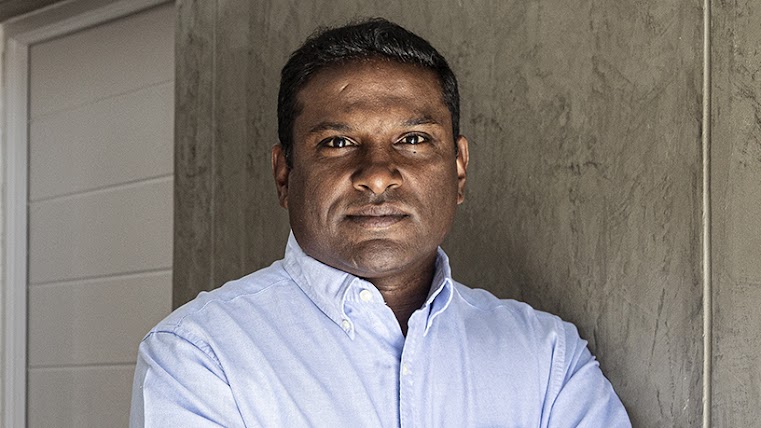Fibre for the future


A nationwide shutdown of the economy to save lives is an unprecedented event. So severe was it, and the spread of the pandemic across the world, that the comparisons with World War 2 are often the only frame of reference being used. Economists and analysts may well have forecasts for how many quarters it will take for the South African economy to recover, along with many others across the world, but, ultimately, no one knows.
However, as bad as things are, if the Covid-19 pandemic had come just a few short years ago, things would have been a lot worse.
The response from most CIOs seems to be that they were busy for those first few days when lockdown was announced, but most office-based employees were shifted to their own homes and carried on with work relatively well. The likes of Zoom and Microsoft Teams, VPNs, the cloud and laptops are hailed as the main heroes. But let’s not forget the role that connectivity has played.
Early on in the lockdown, there was a gleeful murmur that the fibre providers were doubling speeds, at no extra charge, to enable everyone to cope (or watch more Netflix). Bar the early disruption when the WACS undersea cable broke, and, more recently, the dreaded loadshedding, on the whole we, moved on quickly, without second thought for the underlying infrastructure.
Mobile operators were granted additional spectrum by ICASA to ease congestion, as traffic increased on their networks. Undoubtedly, the rollout of fibre across the country, as backhaul for the mobile basestations, but also into residential areas, has been a major blessing to the economy during this time.
Vino Govender, executive: Strategy, mergers and acquisitions, and innovation at DFA, says that while the pandemic and lockdown weren’t on anyone’s long-term horizon, the telecoms industry is one used to dealing with flux. “It's driven by a number of changes, and sometimes we don't anticipate them, such as Covid-19, but what's important is that the underlying infrastructure is the key enabler for the deployment and adoption of services and technologies.”
Although Govender says that the pandemic caught pretty much everyone unaware, DFA was in a good place to respond.
“Last year, before Covid, we were preparing and made a conscious decision to upgrade the capacity on our core network. When users simultaneously shifted to working remotely and at the same time the fibre network operators (FNOs) that plug into us for active backhaul also needed more capacity, all it meant for us was increasing bandwidth
on the port – it was a simple configuration and it was done. A lot of FNOs on our network were able to increase the access speed and the reason was because we had increased the core speed, otherwise all the access coming in would have been congested at the core.”But just because the workforce was at home, that didn’t reduce the amount of traffic on the connections going into the business premises.
“The reality is that a lot of the secure applications would need to be accessed by a VPN, so everything had to hit the VPN and then come into the enterprise network, which still needed the capacity.”
Ready for the future
DFA’s founding mission, Govender explains, was to meet the backhaul requirements of mobile operators, which were, at the time, replacing 2MB copper lines to base stations with fibre. While building out this network to give the basestations fixed line backhaul connectivity, and to help enterprises connect their private cloud datacentres, DFA was intentional in its physical routing so as to pass business and residential areas. This enabled other fibre providers to tap into DFA’s network to start building Fibre To The Business (FTTB) and the Home (FTTH) access services.
The upgrade of DFA’s core network last year was in preparation to meet the future growth in these key areas. The lack of new spectrum for the mobile network operators was a driver. Without more spectrum, they had been unable to create more capacity, and the only solution, it seems, was to densify their networks, which drove greater demand for fibre.
“Mobile data consumption is always increasing, the traffic and type of content – a lot of it is video and gaming, which is data-intensive. In the medium to longer term, as demand for 5G increases, and coverage spreads out across the country, on the back of the whole ecosystem
maturing (device availability, adoption by business and consumers for fixed wireless), then you’ll see densification of those sites driving 5G backhaul as well,” he says.We see the increase of FTTH happening, because companies are experimenting with different types of business models.
Of course, the much-heralded digital transformation of organisations will play a part in increased demand for connectivity going forward. That too has only been accelerated by Covid-19, and 5G will undoubtedly help to further unlock that opportunity.
“Not everyone will be doing e-commerce. For some, it’s about adopting digital technologies to be more operationally efficient, such as more automated processes of the business, the supply chain; it will assist with more accurately forecasting demand, monitoring the movement of goods in transit, using that data in an algorithm-driven demand forecasting models, with third party data as well. That's all part of the mobile broadband use case of 5G.”
One of the more futuristic use cases for 5G that often gets people excited about its possibility is the enablement of autonomous vehicles. But Govender cautions not to get carried away, noting that the landing of such technologies in SA is likely five to 10 years away, and that there won’t be blanket coverage across the country to support them anyway.
“I would see it being very specific in certain environments, such as a port area or a mine. In a metro environment, it will be limited to certain areas like Industrial Development Zones, but it will require a lot of work to be done, policies created, dedicated traffic lanes.”
But first, this
Looking at the more immediate future and traditional use cases, there’s still much that needs to happen in getting fibre into South Africa’s homes and businesses.
“Nationally, we've densified in the metros and we're reactively moving to the smaller towns, building out networks into these areas,” he says.
But DFA is providing the backbone network and relies on other players to take the solutions to customers. Is there innovation happening here?
“We see the increase of FTTH happening, because companies are experimenting with different types of business models. DFA’s sister company Vumatel, for example, is deploying fibre in lower income areas, in high-density, apartment environments. It's all about testing and tweaking how the model works. In that type of environment, they’ll have to be the fibre provider as well as the ISP, due to the price point.”
As a key customer segment for DFA, the company is focusing on how to enable ISPs to become more efficient. It has experimented with a variety of services, but these require volume to justify their launch.
“When there’s critical mass, we can look at platforms to provide to our ISP customers to make them more asset-light and offer a value proposition that they take to their customers.
“New ISPs may not have the funds to invest in infrastructure and that's where they take managed endpoints, so we give them a scalable path and a service portfolio to transition some services to infrastructure. The only time you can operate as a virtual infrastructure business is when you have scale; once you have volume, you can derive scale benefits by building your own network; other than that, you just need an endpoint, which is very consumption-based.”
If the belief that digital transformation is key to leaner and more efficient operations, better customer experience and increased sales, then this will be key to helping to resurrect South Africa’s economy. Spreading fibre-based connectivity will be a vital step in making this a reality to enable businesses to connect and communicate, long after the pandemic has been eradicated.




